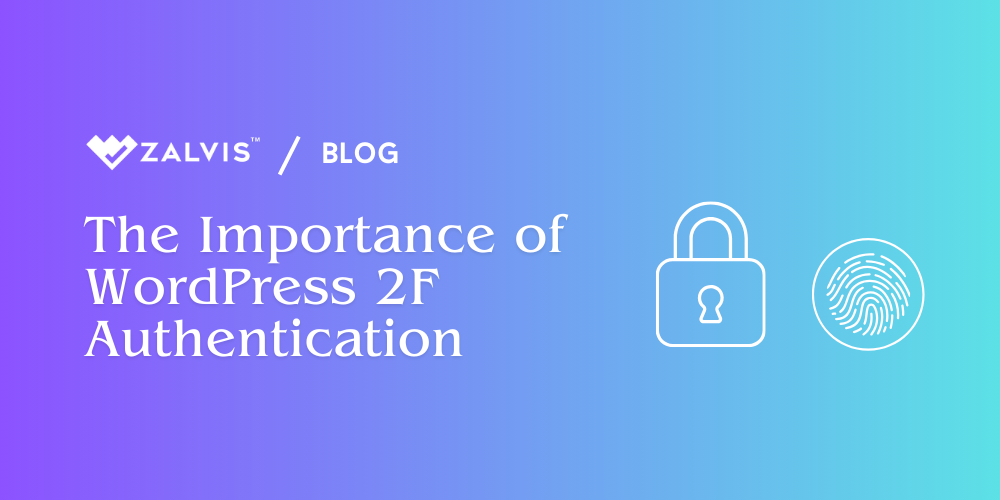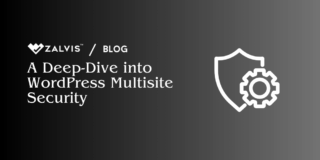In the rapidly evolving digital landscape, security is of paramount importance for website owners, especially those using WordPress, the most popular content management system (CMS) in the world.
WordPress powers millions of websites, from personal blogs to major e-commerce platforms, which makes it a prime target for cyberattacks. As cyber threats become more sophisticated, website owners must adopt robust security measures to protect their sites. One of the most effective ways to bolster WordPress security is through the implementation of Two-Factor Authentication (2FA).
The Importance of WordPress Two-Factor Authentication

This article explores the significance of WordPress Two-Factor Authentication, detailing its benefits, how it works, and why it should be a critical component of your website’s security strategy.
Understanding Two-Factor Authentication
Two-Factor Authentication (2FA) is a security process that requires users to provide two distinct forms of identification before gaining access to their accounts. This extra layer of security goes beyond the traditional username and password combination, significantly reducing the likelihood of unauthorized access.
When you log into a WordPress site with 2FA enabled, you start by entering your username and password as usual. However, instead of being granted immediate access, you are prompted to provide a second form of authentication.
This could be a one-time passcode (OTP) sent to your mobile device, a code generated by an app, a fingerprint scan, or even a facial recognition check. Only after successfully providing this second piece of information are you allowed to log in.
There are various methods for implementing 2FA, each offering different levels of security and convenience. Some of the most common methods include SMS-based authentication, where a one-time code is sent to your mobile phone; app-based authentication, where apps like Google Authenticator generate time-based codes; email-based authentication, where a code is sent to your email; and biometric authentication, which uses fingerprints or facial recognition. More advanced users might prefer hardware tokens, physical devices that generate one-time codes.
The Growing Threat Landscape
The necessity of Two-Factor Authentication becomes evident when considering the growing threat landscape that WordPress site owners face. As WordPress sites have become more popular, they have also become more attractive to cybercriminals. These attackers are constantly developing new methods to breach security defenses, making it crucial for website owners to stay ahead of the curve.
One of the most common threats to WordPress sites is the brute force attack, where automated bots attempt to gain access by systematically trying various combinations of usernames and passwords.
Without 2FA, these attacks can be surprisingly effective, especially if users have weak passwords. With 2FA, even if the attacker manages to guess the correct password, they would still need the second authentication factor, making brute force attacks far less effective.
Phishing attacks are another significant threat. In these attacks, cybercriminals deceive users into revealing their login credentials by creating fake websites that closely mimic legitimate ones. While phishing can lead to password compromise, 2FA makes it much harder for attackers to gain access, as they would also need the second factor, which is typically something they cannot easily obtain, like a code generated by an app or a biometric scan.
Credential stuffing is another technique used by attackers, where they take lists of stolen usernames and passwords from previous data breaches and try to use them to log into other sites. Since many users reuse the same passwords across multiple accounts, credential stuffing can be alarmingly effective.
However, with 2FA in place, even if an attacker has the correct username and password, they would still be unable to log in without the second authentication factor, effectively nullifying the stolen credentials.
The Impact of a Security Breach
The consequences of a security breach can be devastating for WordPress site owners. Depending on the nature of the site, the impact of such a breach can range from the loss of sensitive personal data to severe financial repercussions.
Data theft is one of the most immediate and damaging outcomes, as hackers can steal sensitive information such as customer data, payment details, and personal information, leading to identity theft and financial fraud.
Another common outcome of a security breach is website defacement. This occurs when attackers gain control of a website and modify its content, often replacing it with their own messages or images. This can be incredibly damaging to a brand’s reputation and can result in a significant loss of trust among users.
Additionally, hackers may inject malicious code into the website, infecting visitors’ devices with malware or using the site to spread the infection to other sites.
In some cases, attackers may deploy ransomware, encrypting the site’s data and demanding a ransom for its release. This can cause significant operational disruption, especially for businesses that rely on their websites for revenue generation.
Moreover, a security breach can have severe consequences for a website’s search engine optimization (SEO). Search engines like Google actively blacklist compromised sites, leading to a significant drop in search rankings and organic traffic. This can be particularly damaging for businesses that rely on search engine visibility to attract customers.
Why Two-Factor Authentication is Essential for WordPress Security
Given the growing threat landscape and the potentially devastating impact of a security breach, Two-Factor Authentication is not just an optional security measure—it’s essential. By requiring a second form of authentication, 2FA significantly reduces the risk of unauthorized access, even if a user’s password is compromised.
One of the most significant benefits of 2FA is its ability to protect against brute force attacks. As mentioned earlier, these attacks involve automated bots trying various combinations of usernames and passwords until they find the correct one.
With 2FA in place, even if the attacker manages to guess the correct password, they would still need the second factor of authentication, making brute force attacks far less effective.
2FA also provides a robust defense against phishing attacks. While phishing can lead to the compromise of a user’s password, it is much more challenging for attackers to bypass 2FA, especially when the second factor is something they cannot easily obtain, such as a time-based one-time password generated by an app or a biometric scan.
Furthermore, 2FA is an effective countermeasure against credential stuffing attacks. Since these attacks rely on the reuse of passwords across multiple sites, 2FA renders stolen credentials useless unless the attacker also has access to the second authentication factor.
For WordPress site owners, 2FA is particularly important for securing administrative accounts. These accounts have elevated privileges, making them prime targets for attackers. Compromising an admin account can lead to complete control over the website, allowing hackers to modify content, steal data, or even take the site offline.
Implementing 2FA on admin accounts ensures that even if the password is compromised, the additional layer of security prevents unauthorized access.
Moreover, in many industries, implementing 2FA is not just a security best practice; it’s a requirement for compliance with various regulations. For example, organizations handling sensitive data such as financial information, personal health records, or customer payment details are often required to implement 2FA to comply with regulations like GDPR, PCI-DSS, and HIPAA.
By enabling 2FA on your WordPress site, you not only enhance security but also align with industry best practices and regulatory requirements.
Implementing Two-Factor Authentication on Your WordPress Site
The good news is that implementing Two-Factor Authentication on a WordPress site is straightforward, thanks to the availability of numerous plugins designed to simplify the process. These plugins offer various 2FA methods, allowing site owners to choose the one that best suits their needs.
- Among the most popular WordPress 2FA plugins is Google Authenticator, which integrates with the Google Authenticator app to provide time-based one-time passcodes (TOTP) for secure logins.
- Wordfence Security is another comprehensive security plugin that includes 2FA as part of its suite of features, allowing users to secure their accounts with app-based authentication or email-based codes.
- Authy Two-Factor Authentication is also widely used, offering app-based 2FA compatible with the Authy app, which makes it easy for users to manage multiple sites and devices. (Update: It has been deprecated.)
- Duo Two-Factor Authentication is a robust solution that provides various 2FA methods, including push notifications, phone calls, and biometric authentication.
- Another option is SolidWP, which offers integration with Google Authenticator or backup codes as part of its comprehensive security features.
Setting up 2FA on your WordPress site involves a few simple steps. First, you’ll need to install and activate the desired 2FA plugin from the WordPress repository or by uploading it manually.
Once the plugin is installed, you can access its settings from the WordPress dashboard and configure the 2FA method you prefer. This may involve linking the plugin to an authentication app or enabling email-based codes.
Depending on the plugin, you can also choose to enable 2FA for specific user roles, such as administrators or editors, ensuring that those with elevated privileges have additional security.
Before rolling out 2FA to all users, it’s important to test the setup with a few accounts to ensure it works as expected. Finally, if you plan to enable 2FA for all users, be sure to provide clear instructions on how they can set it up and what to expect during the login process.
Overcoming Potential Challenges
While Two-Factor Authentication offers significant security benefits, it’s not without its challenges. One of the primary obstacles is user adoption. Some users may find the additional step in the login process cumbersome or confusing, which can lead to resistance in adopting the new security measure.
To overcome this, it’s important to provide clear and concise instructions on how to set up and use 2FA. Additionally, offering support and resources, such as video tutorials or FAQs, can help users feel more comfortable with the process.
Another potential challenge is ensuring that users have access to their second factor of authentication at all times. For example, if a user loses their phone or it gets damaged, they may not be able to access their authentication app or receive SMS codes.
To address this challenge, it’s essential to have backup authentication methods in place. Many 2FA plugins allow users to generate backup codes that can be stored securely and used in case they lose access to their primary authentication method.
Some plugins also offer the option to set up multiple methods of authentication, such as both app-based and email-based codes, giving users flexibility in case one method is unavailable.
Additionally, some organizations may face challenges in implementing 2FA across a large number of users, particularly if those users are not tech-savvy. In such cases, it may be beneficial to roll out 2FA in phases, starting with administrative accounts and gradually extending it to other users.
Providing training sessions or webinars can also be an effective way to educate users on the importance of 2FA and guide them through the setup process.
The Future of Two-Factor Authentication and WordPress Security
As cyber threats continue to evolve, so too will the methods used to secure WordPress sites. While Two-Factor Authentication is currently one of the most effective security measures, it’s important to stay informed about emerging technologies and best practices.
For instance, advancements in biometric authentication and the development of more secure and user-friendly authentication methods are likely to influence the future of 2FA.
The introduction of passwordless authentication methods, such as those based on WebAuthn, which uses public key cryptography to authenticate users, is another promising development.
These methods eliminate the need for traditional passwords altogether, further reducing the risk of credential-based attacks. As these technologies become more widely adopted, they may offer even more robust security options for WordPress site owners.
Moreover, the increasing integration of machine learning and artificial intelligence in security solutions is likely to enhance the effectiveness of 2FA and other security measures. AI-driven security tools can analyze user behavior and detect anomalies that may indicate a security threat, allowing for more proactive responses to potential attacks.
In the context of 2FA, AI could be used to assess the risk level of a login attempt and adjust the authentication requirements accordingly, providing a more seamless user experience while maintaining high security standards.
Conclusion
In today’s digital environment, the importance of securing your WordPress site cannot be overstated. With cyber threats becoming more sophisticated and the potential impact of a security breach more severe, implementing robust security measures is essential.
Two-Factor Authentication (2FA) stands out as one of the most effective ways to protect your site from unauthorized access, offering an additional layer of security that goes beyond the traditional username and password.
By requiring a second form of authentication, 2FA significantly reduces the risk of brute force attacks, phishing, and credential stuffing. It is particularly crucial for securing administrative accounts, which are prime targets for attackers.
Implementing 2FA is not only a security best practice but also a requirement for compliance in many industries, making it an essential component of your WordPress security strategy.
While there may be challenges in implementing 2FA, such as user adoption and ensuring access to the second factor, these can be mitigated with proper planning, clear communication, and the use of backup methods.
As technology continues to evolve, so too will the tools and methods available to secure WordPress sites. By staying informed and proactive, you can ensure that your site remains protected against the ever-changing landscape of cyber threats.
In conclusion, Two-Factor Authentication is a powerful tool that every WordPress site owner should consider implementing. Its ability to provide an additional layer of security makes it a critical part of any comprehensive security strategy.
By taking the necessary steps to implement 2FA on your WordPress site, you can significantly reduce the risk of unauthorized access and protect your valuable data, ensuring that your site remains secure and trustworthy for all users.
If you enjoyed this article, then you’ll love Zalvis's WordPress Hosting platform. Turbocharge your website and get 24/7 support from our veteran team. Our world-class hosting infrastructure focuses on auto-scaling, performance, and security. Let us show you the Zalvis difference! Check out our plans.



